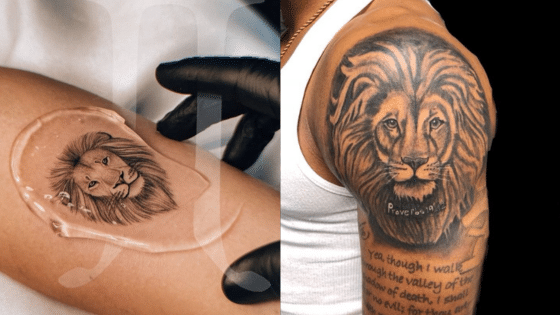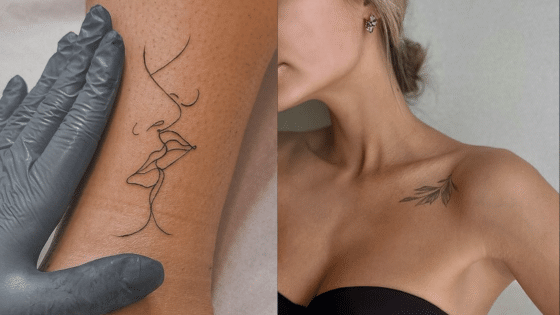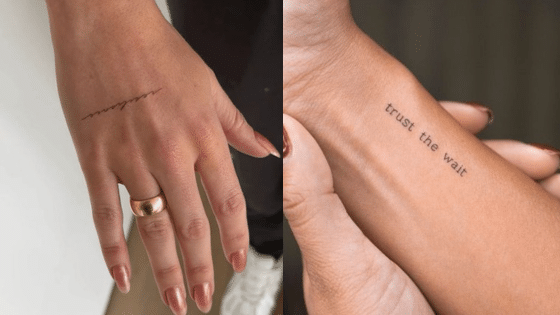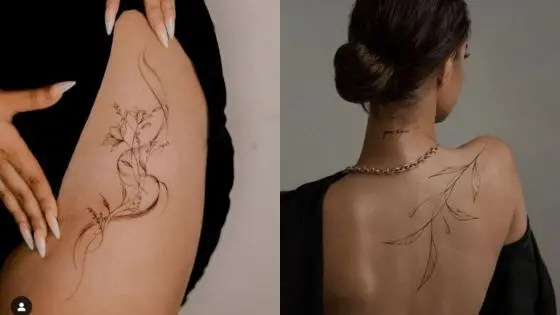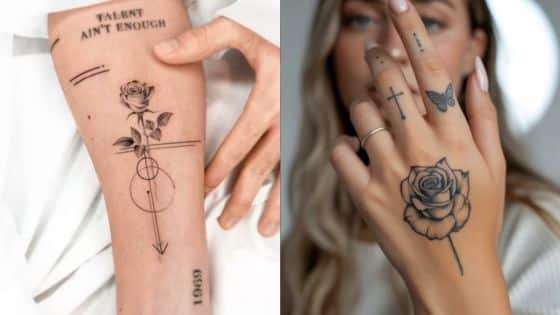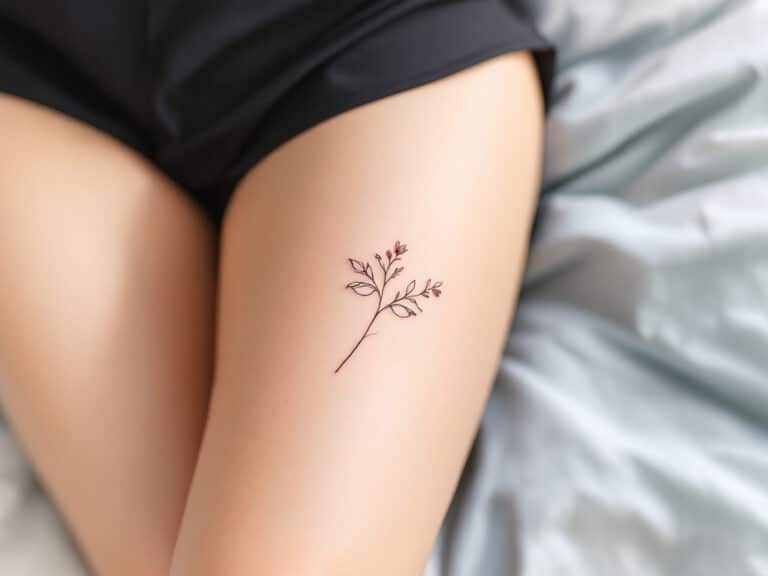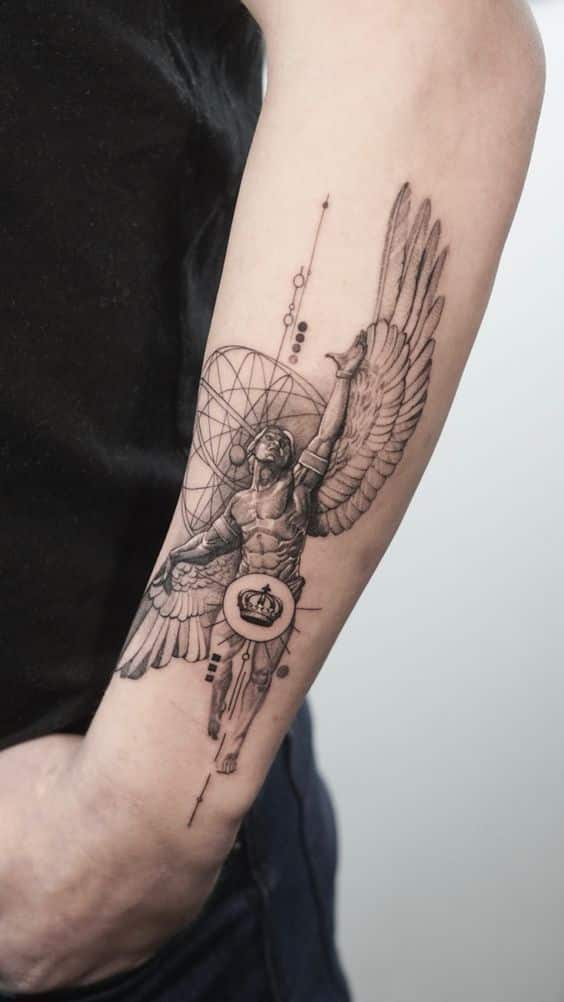
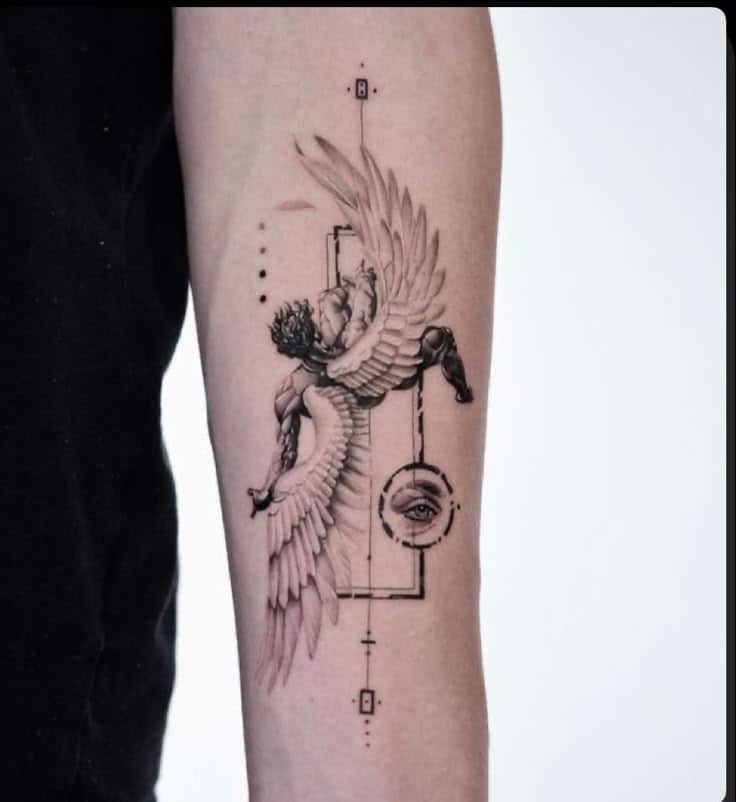
Angel tattoos are a popular choice for people looking to express spirituality, protection, or personal meaning through body art. These tattoos often represent guidance, hope, and the connection between the earthly and the divine. Angel tattoos carry deep symbolism that varies from person to person, making them a meaningful and versatile tattoo option.
Many angel tattoos feature classic designs like wings, halos, or full angel figures. The style can range from simple outlines to highly detailed, realistic artwork. People choose different placements on their body, depending on how visible or private they want the tattoo to be.
This type of tattoo appeals to a wide range of people because it can reflect religious beliefs or personal stories. Choosing the right design and artist is important to ensure the tattoo matches the wearer’s vision and holds lasting significance.
Key Takeaways
- Angel tattoos symbolize protection and spiritual connection.
- Designs vary from simple to realistic styles.
- Placement and artist choice affect the tattoo’s meaning and quality.
What Are Angel Tattoos?
Angel tattoos often represent deep meanings and have a rich history. People choose these designs for their strong symbolism and the roles angels play in different cultures.
Symbolism and Meaning

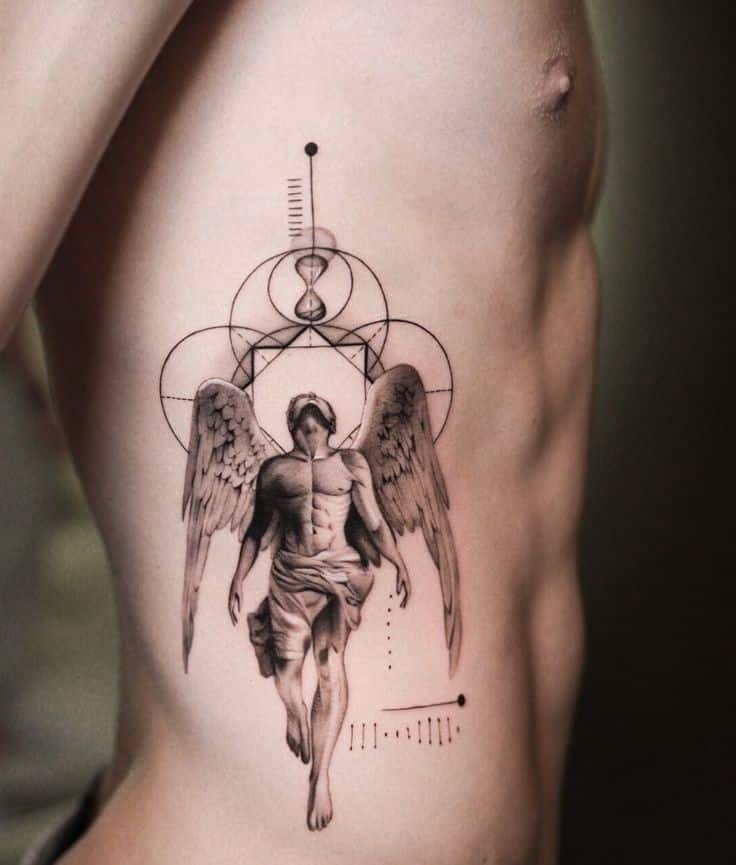
Angel tattoos usually symbolize protection, guidance, and spirituality. They often represent a guardian watching over the wearer or a connection to a higher power. Some people get angel tattoos to honor lost loved ones, seeing angels as messengers or protectors of the soul.
Different styles show various meanings. For example, a cherub tattoo might stand for innocence, while a warrior angel can symbolize strength and courage. The meaning often depends on the angel’s appearance and the wearer’s personal beliefs.
Historical Background


Angel imagery dates back to ancient times and appears in many religious and cultural traditions. In Christianity, angels are seen as divine messengers and servants of God. Their first known art appeared in early Christian paintings and sculptures.
Over the centuries, angels became popular subjects in Renaissance art. Tattoos with angel images started appearing more often in the 20th century when tattoos became mainstream. The designs evolved to include both realistic and abstract forms.
Cultural Significance


Angels hold important roles in several cultures beyond just religion. In Western cultures, they often symbolize hope, faith, and the struggle between good and evil. They are also common in memorial tattoos to represent eternal life.
In some cultures, angels blend with local beliefs. For instance, Native American or Latin traditions mix angelic ideas with their spiritual symbols. This mix broadens the cultural meaning and personal significance of angel tattoos.
Popular Angel Tattoo Designs
Angel tattoos come in many styles, each with unique meanings and looks. Some focus on protection and guidance, while others explore different spiritual or artistic ideas. The designs vary by details like posture, wings, and facial features.
Guardian Angel Tattoos


Guardian angel tattoos often symbolize protection and care. They usually show an angel watching over or shielding someone. People get these tattoos to feel comforted or to honor someone who has helped or supported them.
These tattoos often include soft, flowing wings and a peaceful face. The angel might hold a sword or a harp, signifying strength or harmony. Some designs place the angel near a child or a family member to show watchfulness and love.
Fallen Angel Tattoos


Fallen angel tattoos represent struggle, loss, or rebellion. They can symbolize someone who once had purity but now faces hardship or fights against rules. The fallen angel is often shown with torn wings or a somber expression.
The style often uses darker tones, like black or gray, to highlight pain or conflict. Some choose this tattoo to show personal challenges or to reflect a more complex side of human nature.
Cherub Tattoos
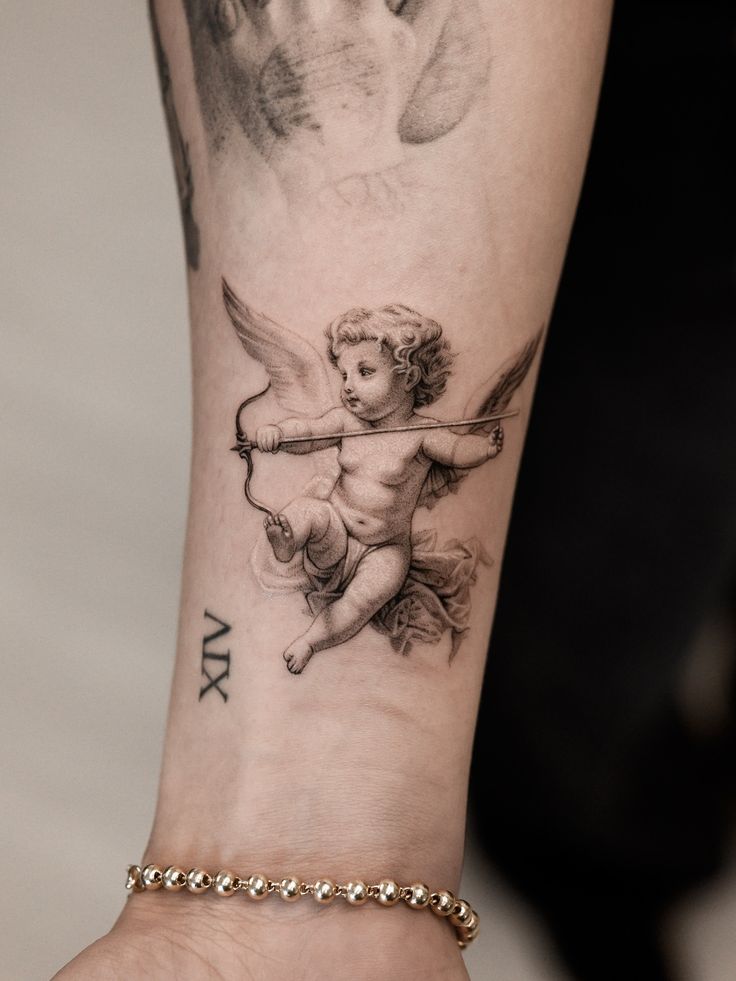

Cherub tattoos depict small, chubby angelic figures, often seen as innocent and joyful. These designs focus on youth and purity. Cherubs usually have round faces, curly hair, and tiny wings.
They are popular for people who want a soft or sweet tattoo. Cherubs can also represent love, often shown holding hearts or surrounded by clouds.
Archangel Tattoos


Archangel tattoos show powerful angels with strong symbols. Archangels like Michael or Gabriel are often depicted with armor, swords, or trumpets. These tattoos symbolize strength, leadership, or important messages.
The designs aim to look bold and inspiring. They might show the archangel fighting evil or delivering a message, highlighting their role in spiritual battle or guidance.
Angel Tattoo Placement Ideas
Angel tattoos can be shown in many different places on the body. Each spot has its own look and meaning. Some areas allow for bigger, detailed designs, while others suit smaller, simpler ones.
Back


The back is a popular place for angel tattoos. It offers a large, flat space for detailed and big designs. Angels with wings spread wide look very clear here.
This area is good for adding background elements like clouds or rays of light. The tattoo can easily be hidden under clothing if needed.
Larger pieces on the back can take several sessions to complete, but they give a strong visual impact once done.
Forearm


The forearm is a great place for an angel tattoo if someone wants to show it off more often. This area is good for designs that are narrow or medium-sized.
Placement on the forearm allows easy visibility for the wearer and others. It also fits well with tattoos that include specific symbols like crosses or halos.
Forearm tattoos may fade faster due to sun exposure, so regular care and touch-ups might be needed.
Chest

The chest is a meaningful spot for angel tattoos. It sits close to the heart, making it ideal for personal or emotional designs.
Tattoos here might represent protection, guidance, or memory. The shoulder to the center of the chest is often used for wings or full-bodied angels.
Pain can be stronger in this area because of the bone nearby, but the result is usually worth it.
Shoulder

The shoulder is good for small to medium angel tattoos. Its rounded shape fits winged figures or angel faces well.
It offers a visible spot without being too exposed, making it easy to cover with clothing when wanted.
Shoulder tattoos age well because the skin here does not stretch much. This keeps the image clear over time.
Realism and Artistic Styles
Angel tattoos vary widely in their look and style. Some focus on lifelike detail, while others use simple lines or soft, flowing colors. Each style changes the mood and meaning of the tattoo.
Realistic Angel Tattoos


Realistic angel tattoos aim to look like real people or sculptures. Artists use shading and fine lines to create depth and texture. These tattoos often show detailed facial features, wings, and clothing.
The style requires skilled tattoo artists who understand light and shadow. This realism can make the angel look very lifelike and emotional. Realistic tattoos may use black and gray or full color for a bright effect.
Minimalist Designs


Minimalist angel tattoos use few lines and simple shapes. They often focus on the outline of the angel or a small symbolic part like wings or a halo.
These tattoos are usually small and clean, making them easy to place anywhere. Minimalist designs suit people who want a subtle but meaningful tattoo. The simplicity can highlight the symbol without extra detail.
Watercolor Angel Tattoos


Watercolor angel tattoos use soft, flowing colors that blend together. The color fades at the edges, mimicking real watercolor paintings.
This style often appears more abstract and artistic. It can create a dreamy or spiritual feeling in the tattoo. Watercolor tattoos are less defined by lines and more about color and form.
Religious and Spiritual Aspects
Angel tattoos often carry deep meaning tied to faith and spirituality. These designs reflect beliefs about protection, guidance, and divine connection. Different religions view angels in distinct ways, which affects how people choose their tattoos.
Christian Symbolism


In Christianity, angels are messengers of God and protectors of humans. They represent purity, hope, and divine intervention. Many people get tattoos of archangels like Michael or Gabriel, who symbolize strength and courage.
Angel tattoos in Christianity often show wings, halos, or praying figures. These elements highlight the spiritual role angels play in guarding souls and delivering God’s will. Tattoos may also include Bible verses that mention angels or spiritual protection.
The designs can serve as reminders of faith, comfort during hard times, or signs of remembrance for lost loved ones. They often reflect personal beliefs about God’s protection and guidance.
Angels in Other Religions


Angels appear in several other religions with unique meanings. In Islam, angels (called Malak) are spiritual beings who follow God’s commands and record human actions. Tattoos inspired by Islamic angels might include Arabic calligraphy or abstract wings to respect religious rules.
Judaism views angels as God’s agents serving many roles, such as messengers or helpers during trials. Jewish angel tattoos may emphasize protection or guardian figures described in religious texts.
In some Eastern religions, angel-like beings are seen as protectors or spiritual guides, though they may not be called angels. These symbols often connect with balance, enlightenment, or karma.
Each faith influences angel tattoos differently, shaping their appearance and significance in strong, clear ways.
| Religion | Role of Angels | Tattoo Elements |
|---|---|---|
| Christianity | Messengers, protectors | Wings, halos, saints |
| Islam | Servants of God, recorders | Calligraphy, abstract wings |
| Judaism | Guardians, helpers | Texts, protective figures |
| Eastern | Spiritual guides, protectors | Symbols of balance or karma |
Gender-Specific Angel Tattoos
Angel tattoos often reflect different styles and meanings depending on the wearer. Designs for men usually focus on strength and protection, while designs for women often highlight beauty and spirituality.
Angel Tattoos for Men


Men’s angel tattoos often feature bold lines and darker shading. These designs sometimes show angels as warriors with swords or armor, symbolizing protection and courage.
Many men choose tattoos with strong wings or muscular angel figures. These tattoos may appear on larger areas like the back, chest, or arms.
Some men pick angel tattoos tied to religious themes, showing loyalty or faith. Black and gray ink is popular for its solid, masculine look.
Angel Tattoos for Women

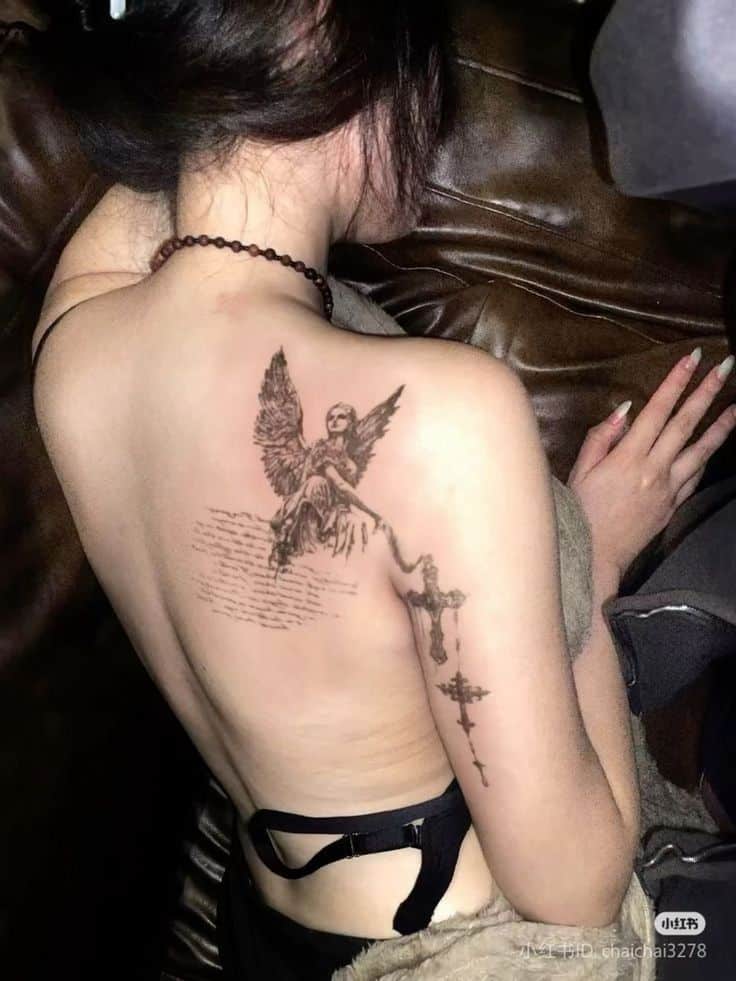
Women’s angel tattoos often emphasize delicate details and softer lines. These tattoos may show angels with gentle expressions or in flowing robes, symbolizing peace and guidance.
Common placements include the shoulder, wrist, or ankle, where smaller and more detailed tattoos fit well. Flowers or halos often accompany these designs for a graceful touch.
Women may choose colors like soft pastels or light blues to highlight the gentle nature of the angel tattoos. Some also include symbols of love or protection.
Choosing the Right Angel Tattoo Artist
Finding the right artist takes more than just picking someone nearby. It means looking deeply at their past work, asking the right questions, and knowing how to care for the tattoo after it’s done.
Researching Portfolios
The portfolio shows an artist’s skills, style, and experience. Look for images of angel tattoos specifically. This helps to check if the artist can handle the details you want, like wings, halos, or faces.
Online galleries and social media pages often have many examples. Pay attention to line work and shading. Clear, clean lines and smooth shading show good technique. Avoid artists with mostly low-quality or blurry photos.
Check for variety in poses and angel designs. This means the artist can customize your tattoo rather than copying one design repeatedly.

Consultation Tips
A consultation is a chance to talk directly with the artist. Bring your ideas and any reference images. A good artist will listen carefully and suggest ways to improve the design.
Ask about their experience with angel tattoos and the time needed to complete your piece. Discuss the size, placement, and how the tattoo might age.
Make sure to talk about pricing and sessions. Some tattoos take multiple sittings. Be clear on what’s included in the quoted price.
Watch how the artist communicates. They should be patient, clear, and willing to answer questions.


Aftercare Advice
Proper care affects how the tattoo looks and heals. The artist should provide clear written or verbal instructions.
These usually include keeping the tattoo clean, applying ointment, and avoiding direct sunlight or soaking in water for weeks.
Ask about specific products to use or avoid. Some inks or creams can irritate if not recommended by the artist.
Following aftercare advice helps prevent infections and keeps colors bright. If any issues arise, contact the artist right away for advice.
Customization and Personalization
Angel tattoos can be made unique by adding specific details that carry special meaning. Personal touches help the tattoo reflect important memories or beliefs.
Incorporating Names and Dates

Names and dates are common ways to make an angel tattoo more personal. People often include the name of a loved one or the date of a significant event, like a birth or a loss.
This practice helps the tattoo serve as a tribute or a reminder. The placement of these details varies, but they are usually near the angel figure or integrated into the wings or halo.
Fonts can be simple or ornate depending on the wearer’s style. Sometimes, dates are written in Roman numerals to add a classic look. This kind of personalization gives the tattoo a clearer, deeper meaning.
Blending with Other Symbols

Angel tattoos can include other symbols to express broader ideas or personal stories. Common additions include hearts, crosses, feathers, or stars.
Each symbol adds a layer of meaning. For example, a cross may represent faith, while a feather can signify freedom or protection.
These elements can be blended into the design in various ways, such as wrapping a feather around the angel’s arm or placing a star above the head. This makes the tattoo more complex and meaningful without losing the angel’s central role.
Using multiple symbols also allows the wearer to combine several important themes in one design.
Angel Tattoos in Modern Culture
Angel tattoos have become popular symbols with many meanings. People choose them for protection, faith, or as memorials. Two big influences on their popularity are celebrities and social media trends.
Celebrity Angel Tattoos
Many well-known celebrities have angel tattoos, which helps spread their appeal. For example, singer Rihanna has a small angel tattoo on her ankle, showing personal faith and protection. Actor Chris Brown has a large angel design on his back, symbolizing strength and guidance.
These tattoos often come with unique styles, from realistic angels to simple outlines. Celebrities influence fans by showing how angel tattoos can fit into different lifestyles. Tattoo artists also recreate celebrity styles, making these designs more mainstream.


Social Media Trends
Social media platforms like Instagram and TikTok play a big role in popularizing angel tattoos. Users share photos and videos of their tattoos, often with stories about their meanings. This creates communities interested in angel symbolism.
Hashtags such as #AngelTattoo and #TattooInspo have millions of posts. Many tattoo artists post their best angel designs, attracting clients worldwide. Social media also helps new trends, like minimalist or watercolor angel tattoos, gain fast popularity.
Long-Term Considerations


Angel tattoos often hold deep personal meaning. Over time, the significance behind the design may change for the person wearing it. They should be aware that feelings about the tattoo can evolve.
Skin changes with age can affect the tattoo’s appearance. Wrinkles, stretching, or fading can make the design less sharp. Regular touch-ups might be needed to keep the tattoo clear.
Sun exposure can quickly fade angel tattoos. It is important to use sunscreen on the tattooed area to maintain color. Wearing protective clothing helps prevent damage from UV rays.
Healing is another factor to consider. Proper aftercare during the first few weeks is key to avoiding infection or scarring. Following the artist’s instructions carefully ensures better long-term results.
Angel tattoos can carry religious or cultural meaning. This might impact how others perceive them in different social or work environments. The person should think about how the tattoo fits into their lifestyle.
Here is a quick list of long-term care tips:
- Avoid prolonged sun exposure
- Keep skin moisturized
- Get regular touch-ups
- Follow hygiene rules during healing
Planning ahead can help maintain the tattoo’s look and meaning for many years.
- 661shares
- Facebook0
- Pinterest658
- Twitter3
- Reddit0








